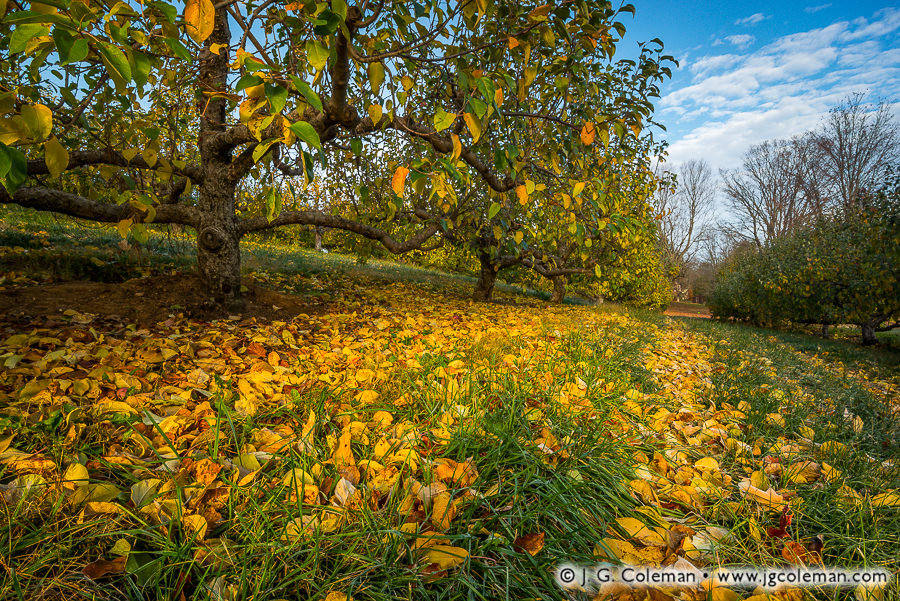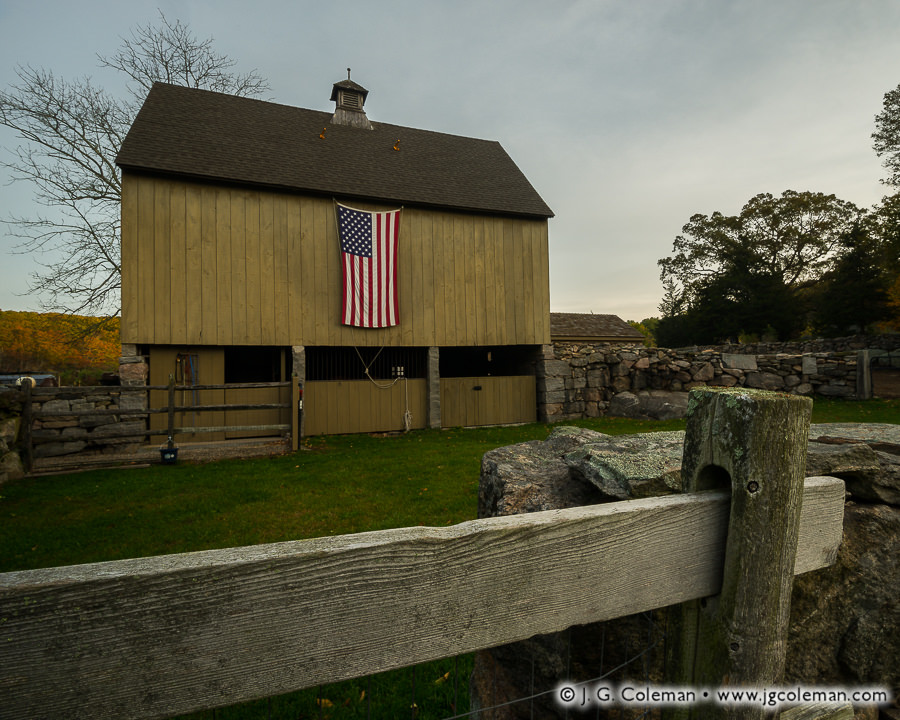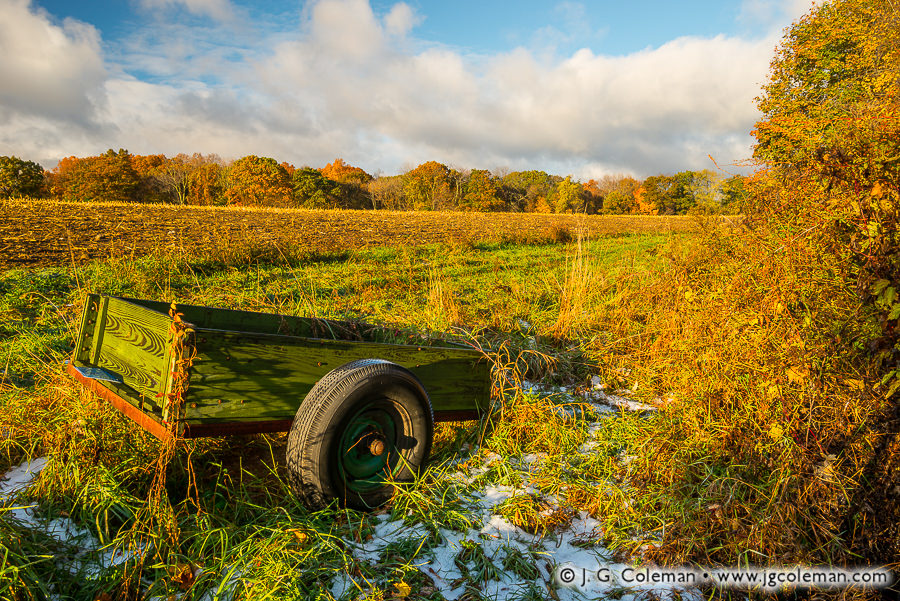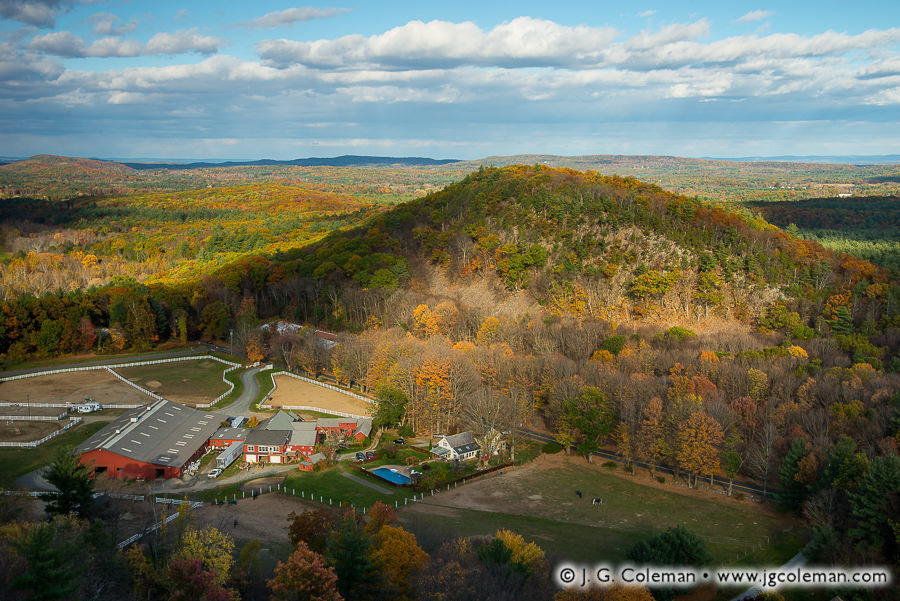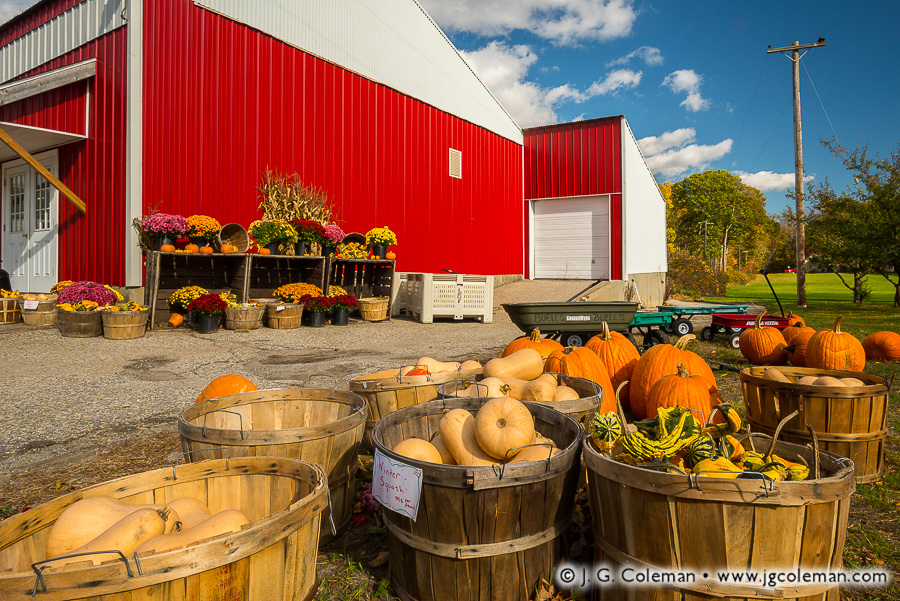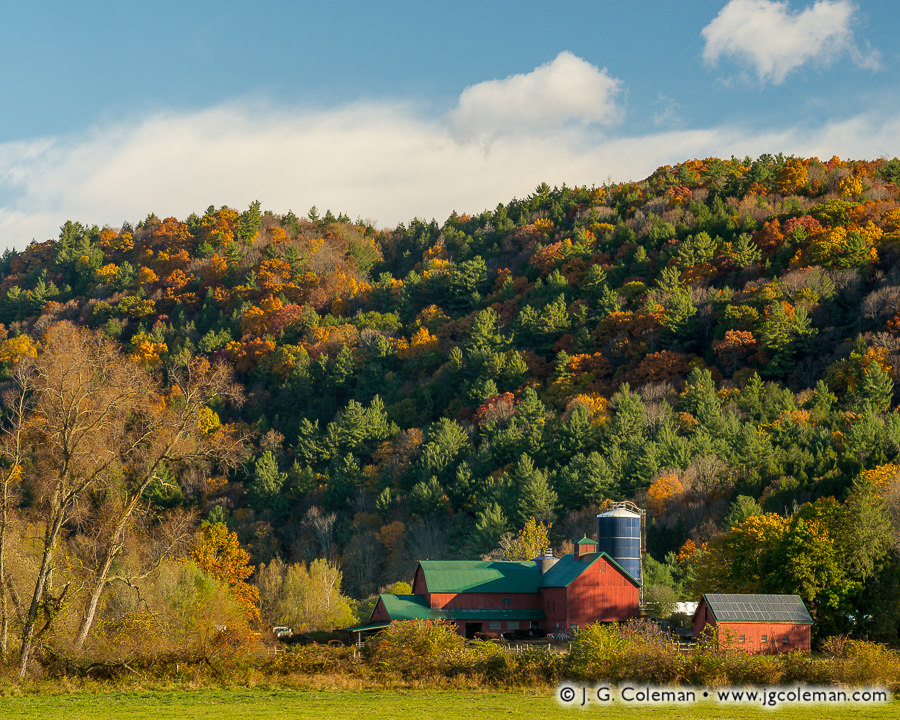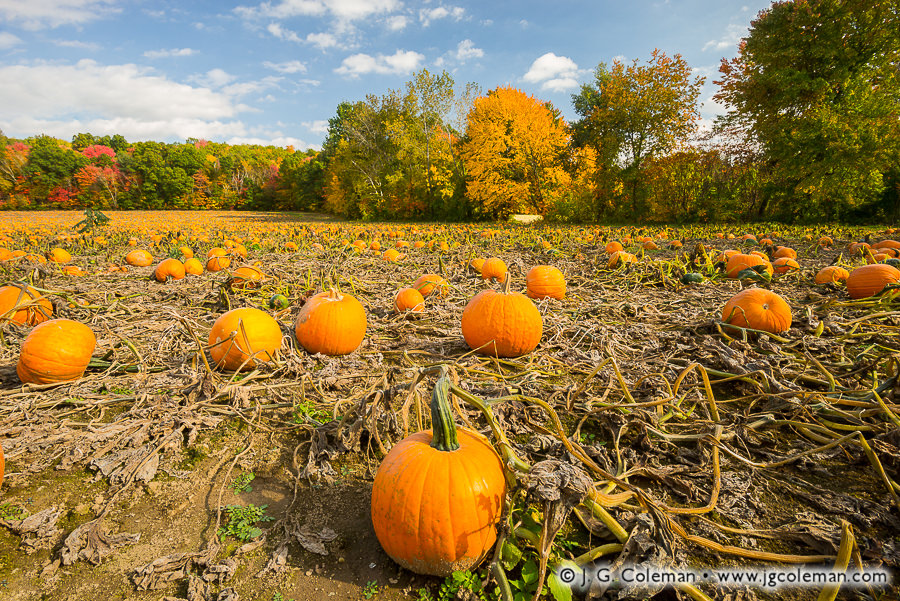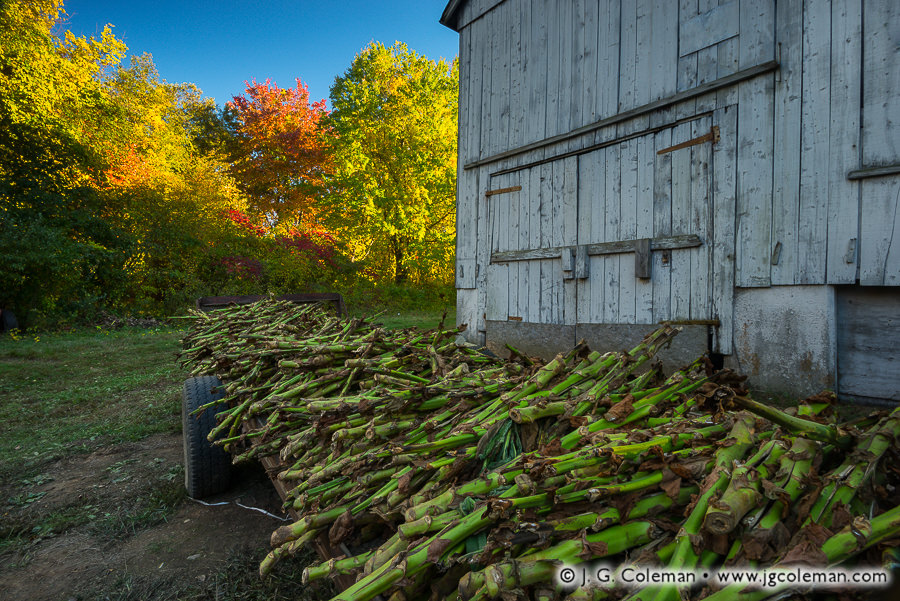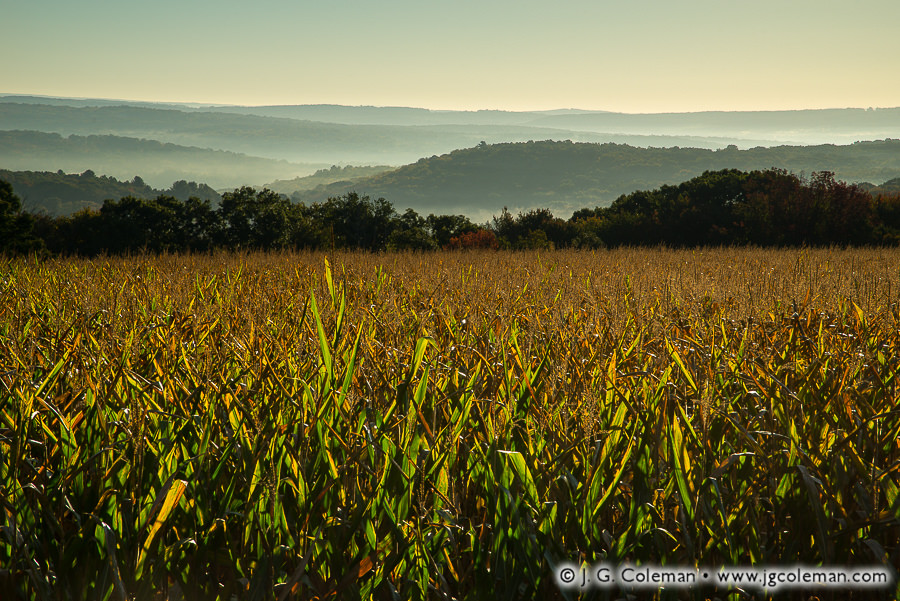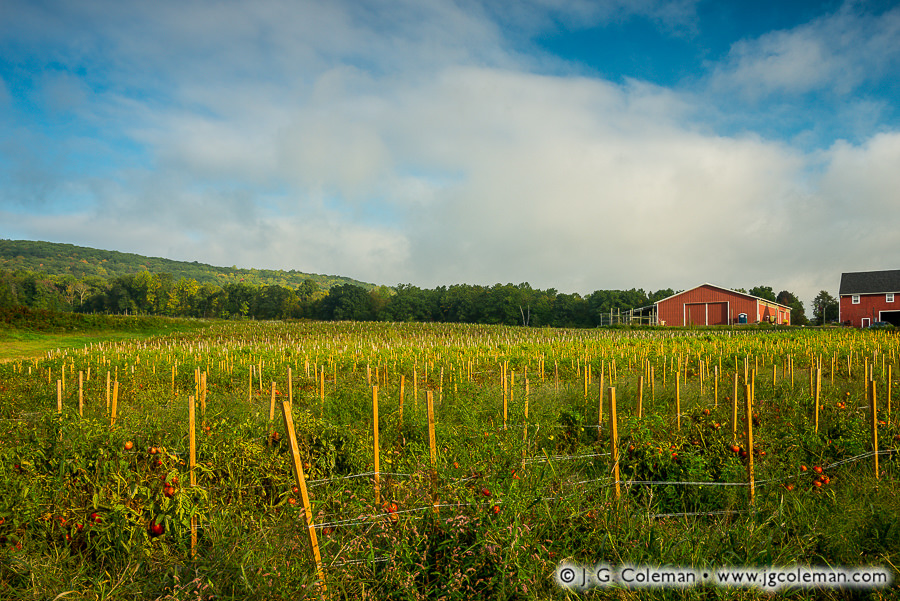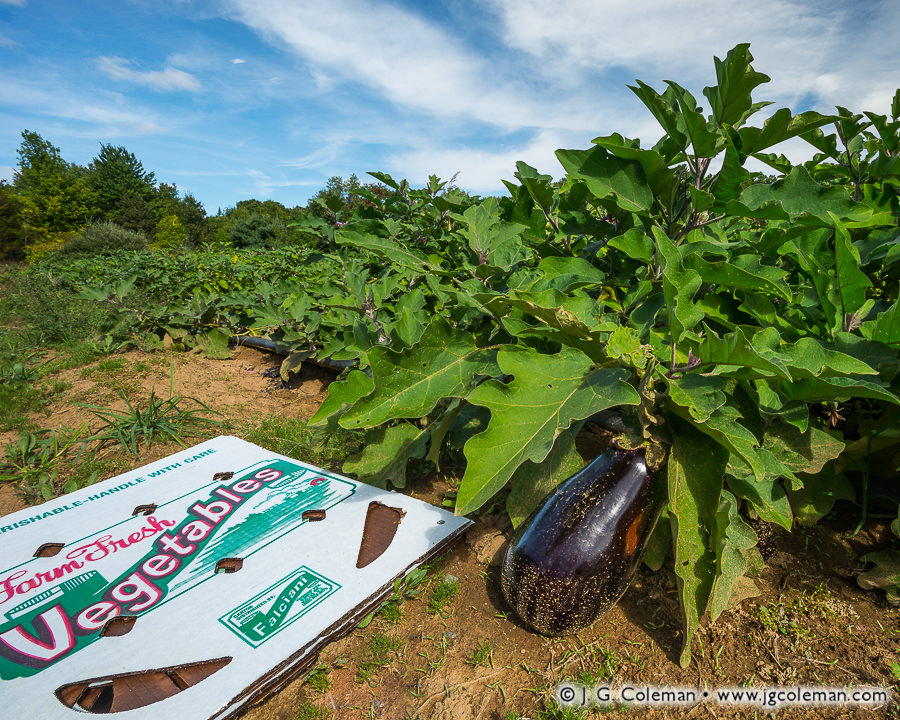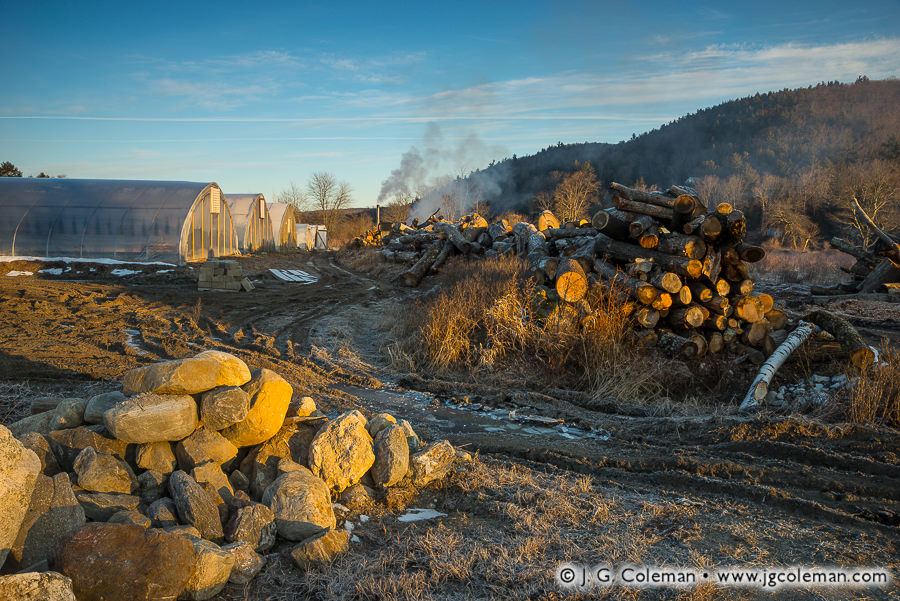
Farm on cold January morning, Village of Nepaug in New Hartford, Connecticut
© 2016 J. G. Coleman
In the rural valley of Nepaug beneath the looming silhouette of Yellow Mountain, farmland is daubed with molten light upon awakening to another January morning. A dirt road creased with frozen ruts weaves amidst piled fieldstones, timbers and greenhouses before vanishing into the farm’s interior.
Although many of Connecticut’s towns have existed for centuries, their configurations have changed dramatically over time. For example, in the 1720s, New Hartford’s pioneering farmers from the Connecticut Colony settled at Town Hill just north of Yellow Mountain (which would’ve been on the far side of the hill as it’s seen in this piece) and thought of their village as the “town center” for next 100 years.
By the 1820s, though, the village of Nepaug emerged as the new town center when its productive streamside mills became the focal point of the community. But even Nepaug would eventually pass the torch when, in the 1870s, New Hartford’s very first Town Hall was built in the district of North Village. North Village had simply outgrown Nepaug during the intervening five decades and, to this very day, it still claims the unofficial designation of town center.
Purchase a Fine Art Print or Inquire About Licensing
Click here to visit my landing page for “Yankee Farmlands № 98” to buy a beautiful fine art print or inquire about licensing this image.
Want to See More?
Be sure to check out all of the work in my Yankee Farmlands project, an on-going series that explores the Connecticut countryside in celebration of the agricultural heritage of New England.


